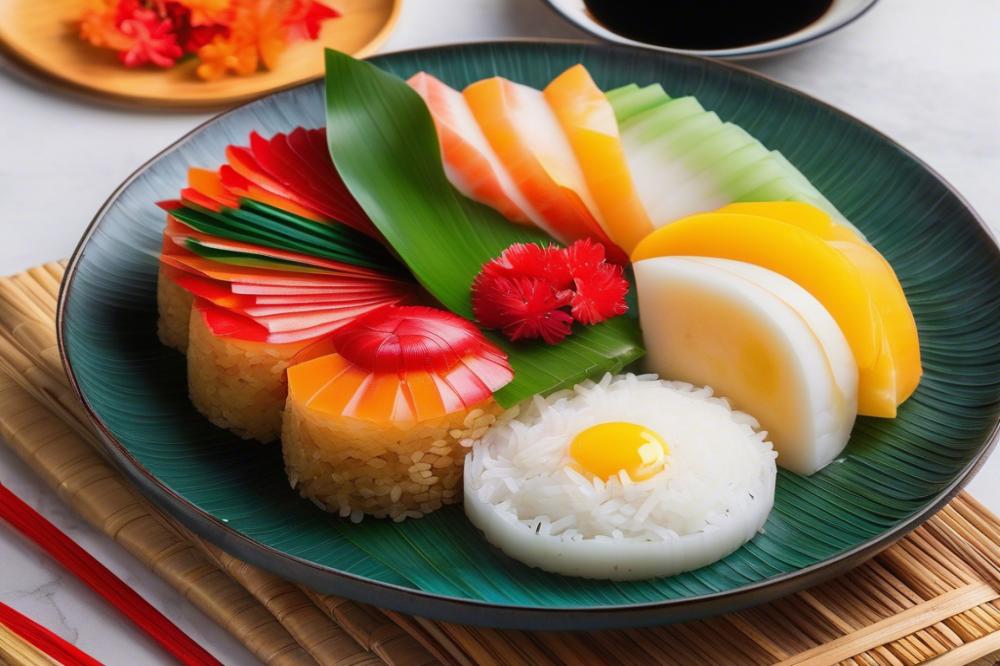Introduction
Bánh Tét is a beloved Vietnamese dish often served during the Lunar New Year. This traditional recipe is more than just food; it is a symbol of cultural heritage. Families prepare this savory treat to celebrate the start of a new year, connecting generations with its unique flavors and meanings.
The dish consists of sticky rice wrapped around layers of mung beans and pork belly, all encased in banana leaves. This combination of sweet and savory delights showcases the depth of Vietnamese cuisine. Preparing Bánh Tét is a family affair. Everyone gathers to help, celebrating togetherness and the spirit of festivity.
As families cook, laughter fills the air. The act of making this Vietnamese Sticky Rice Cake brings people closer, creating memories that last a lifetime. Each bite of Bánh Tét tells a story of love, tradition, and the hope for a prosperous year ahead. During the Lunar New Year, this festive food symbolizes family unity and wishes for good fortune.
The Tradition of Bánh Tét
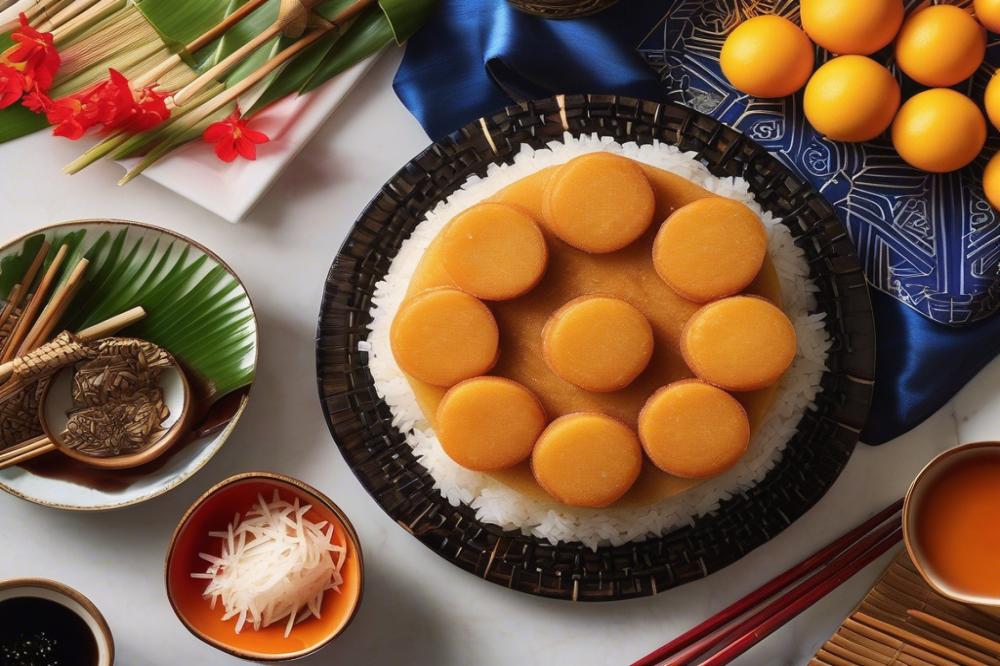
Bánh Tét is a cherished part of Vietnamese culture, especially during the Lunar New Year. This traditional recipe represents much more than just a festive food. It embodies the history, values, and agricultural roots of the Vietnamese people.
Historically, this sticky rice cake dates back centuries. Families began making it to honor their ancestors. Today, it is a symbol of prosperity and togetherness. Preparing and sharing this dish brings loved ones together, demonstrating the strong family ties that are so important in Vietnamese cuisine.
During the festive season, you will often find festive gatherings centered around Bánh Tét. People take the time to prepare it from scratch. The process involves cooking sticky rice, filling it with a mix of mung beans and pork belly, and wrapping it carefully in banana leaves. This labor of love ties families to tradition and to one another.
The ingredients used reveal much about the agricultural heritage of Vietnam. Sticky rice is a staple in the Vietnamese diet. Mung beans and pork belly add both sweet and savory flavors. These ingredients remind everyone of the importance of rice farming in everyday life. Vietnam, known as the land of rice, celebrates and honors this essential crop through dishes like Bánh Tét.
As a festive food, this dish brings happiness and good fortune for the upcoming year. The round shape symbolizes completeness and unity. When served, Bánh Tét often garners attention and admiration, showcasing not just culinary skill but also deep cultural significance.
In essence, this sticky rice cake intertwines elements of history, family, and agricultural roots. Each bite not only delights the palate but also tells a story. It connects generations and keeps alive the traditions of the Vietnamese people.
Ingredients and Cooking Instructions
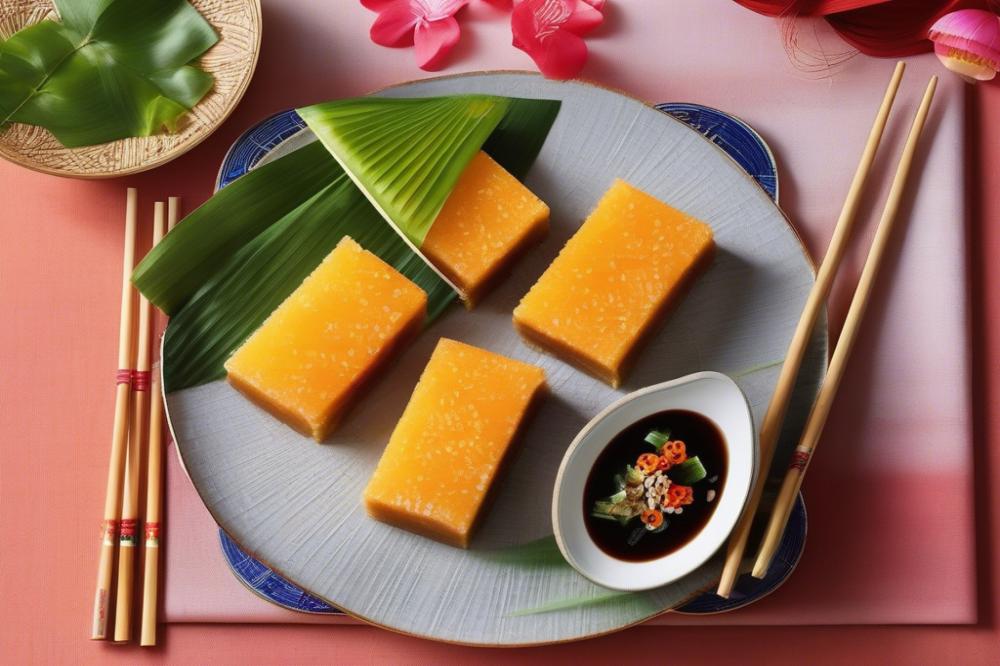
Ingredients
- 2 cups sticky rice
- 1 cup mung beans
- 300g pork belly
- 4 banana leaves (fresh or frozen)
- 1 teaspoon salt
- 1 tablespoon pepper
- 1 tablespoon cooking oil
- Optional: 1 tablespoon sugar (if making sweet version)
Cooking Instructions
Begin by soaking the sticky rice and mung beans overnight. This step ensures the grains swell and soften for cooking. The next day, prepare the banana leaves. Clean them thoroughly and soften them by briefly dipping in hot water or steaming. Take your time to handle them carefully; they are delicate.
While waiting for the leaves, cook the mung beans in boiling water until they become soft. Once tender, mash them into a paste. This will serve as a creamy filling. Season the pork belly with salt and pepper. You can also add a dash of cooking oil for extra richness. Marinate it for about 15 minutes to let the flavors deepen.
Now it’s time to assemble. Lay a banana leaf flat and place a portion of sticky rice, followed by a layer of mashed mung beans and a slice of pork belly on top. If you enjoy a sweeter flavor, sprinkle in sugar. Carefully fold the banana leaves over the filling, rolling it into a tight cylinder shape. Secure the ends to avoid spillage.
Boil or steam the wrapped masterpiece for about 4 to 6 hours. Cook until everything is fully tender and flavors meld together. This method of preparation highlights the importance of cooking in Vietnamese cuisine, creating a unique festive food that celebrates cultural heritage during the Lunar New Year.
Nutritional Information
Each ingredient contributes to the cake’s overall nutrition. Sticky rice offers around 400 calories per cup with high carbohydrate content. Mung beans are nutritious, containing about 230 calories per cup and providing protein along with fiber. Pork belly, while delicious, is higher in fat, offering roughly 500 calories for 300 grams. Banana leaves are not eaten but add flavor and aroma. Spices like salt and pepper contain minimal calories but enhance taste. Using sugar adds a bit more sweetness if desired, with about 48 calories per tablespoon for those opting for the sweet variation.
Sweet and Savory Variations of Bánh Tét
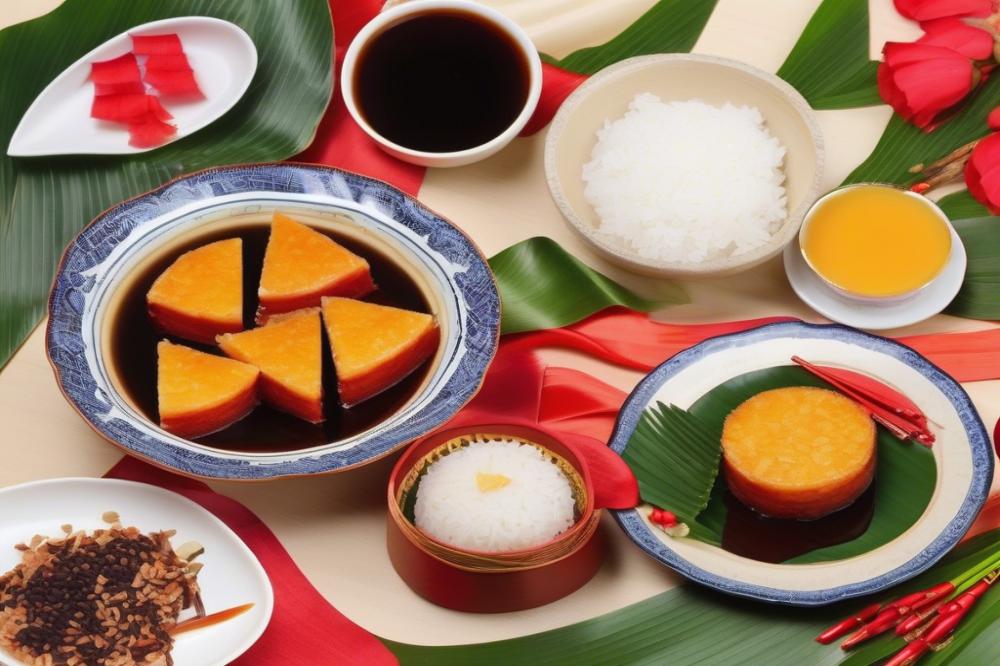
The world of Bánh Tét is rich with diversity. Many flavors emerge to celebrate the Lunar New Year. In different regions of Vietnam, variations often reflect local tastes. Some families stick to traditional recipes. Others enjoy experimenting with new ingredients.
One popular variation includes sweet fillings. Coconut milk is often added to the sticky rice. This gives the cake a creamier texture. In addition, sugar can sweeten the dish further. Some cooks, especially in the south, mix in grated coconut for an extra layer of flavor.
Bánh Tét can also hold savory elements. Shredded pork belly is a common choice. Mung beans fill the spaces between the layers, providing a hearty taste. Delightful spices like black pepper and garlic can also enhance the savory version. Some recipes include salted egg yolks for richness.
Banana leaves wrap the cake tightly. This not only keeps the shape but infuses a light aroma as it cooks. The cooking process varies. Some people choose to steam, while others boil the cakes. Either method produces a satisfying texture.
Festive food during the Lunar New Year means something special. These variations bring families together. Preparing different styles allows everyone to find a favorite. The blend of sweet and savory captures the complexity of Vietnamese cuisine. It’s a celebration of cultural heritage, showcasing both traditional and modern tastes.
As families gather to prepare this dish, stories are shared. Cooking becomes a way to connect generations. Ingredients might change, but the spirit remains constant. Every slice of Bánh Tét unites everyone in joy and remembrance during this auspicious time.
Serving and Enjoying Bánh Tét
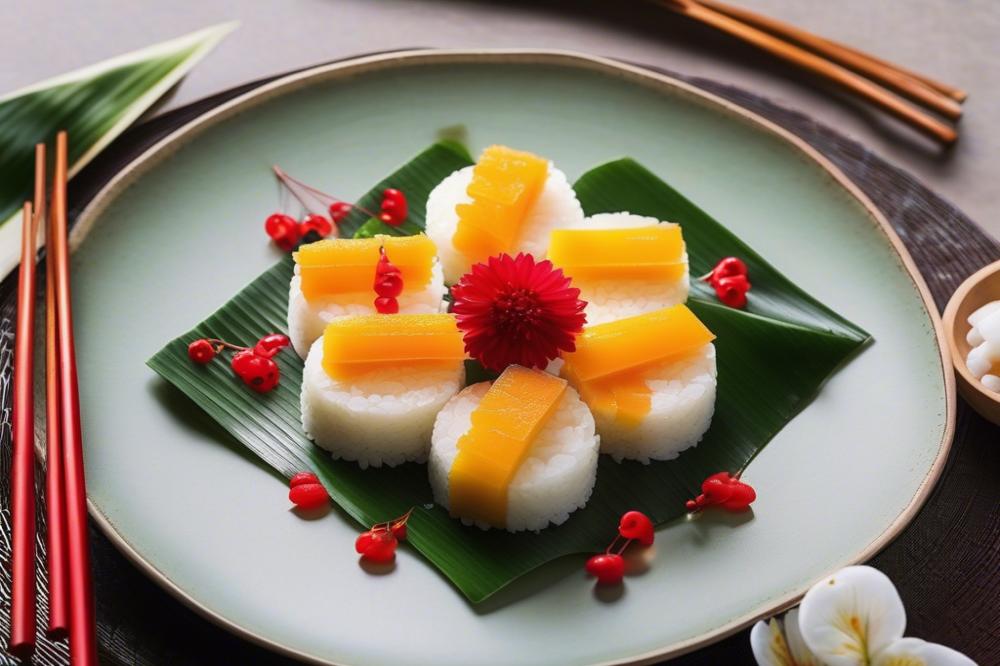
During the Lunar New Year, making and sharing Bánh Tét is an integral part of Vietnamese celebrations. This traditional recipe combines sticky rice, mung beans, and pork belly wrapped in banana leaves. Families gather to prepare this dish, creating a warm atmosphere filled with laughter and joy. Each family often has their own special way of making it, which showcases their unique traditions and flavors.
When served, Bánh Tét can be cut into thick slices. People usually enjoy it warm or at room temperature. It can be eaten plain or with dipping sauces. Some prefer a drizzle of soy sauce for a savory touch, while others enjoy coconut milk to enhance the dish’s sweetness. Mixing sweet and savory flavors reflects the complexity of Vietnamese cuisine. Consider serving with pickled vegetables or fresh herbs for an additional burst of flavor.
Sharing food is an essential part of festive occasions. Bánh Tét symbolizes unity and harmony among family and friends. When everyone gathers, stories are shared along with bites of this beloved cake. The act of eating together fosters connection and strengthens bonds. Many families make extra servings to share with neighbors or friends, extending the festive spirit beyond their own home.
This cake is often accompanied by fresh fruits and tea, enhancing the overall dining experience. Eating Bánh Tét is more than just a meal; it is a celebration of cultural heritage. As each bite is enjoyed, memories of togetherness and warmth fill the air. Thus, preparing and sharing this dish creates lasting memories cherished for years to come.
The Heart of the Lunar New Year: Embracing Tradition
Preparing and enjoying Bánh Tét during the Lunar New Year is more than just cooking; it symbolizes cultural heritage and family bonds. This traditional recipe represents the essence of Vietnamese cuisine and reflects values passed down through generations. Families come together in the kitchen, each member playing a role in the preparation. The act itself strengthens relationships, creating lasting memories.
Savoring this dish also connects people to their roots. Each layer of sticky rice tells a story, celebrating harvests and ancestral respect. The flavor and texture make it a beloved choice for the holiday. Sharing Bánh Tét with friends and family fosters a sense of unity and joy. Being present during mealtime reinforces the spirit of togetherness.
Trying to make this dish at home can be a rewarding experience. Embrace the opportunity to learn and keep traditions alive. Whether you are skilled in the kitchen or just starting, the process is a labor of love. Gathering ingredients and following the recipe brings excitement to the holiday preparations.
Let this dish be a bridge between the past and the present. Each bite reminds us of who we are and what we cherish most. Celebrate the Lunar New Year with a heart full of gratitude and the joy of tradition. Engaging in the creation of Bánh Tét not only enriches your culinary skills but also nurtures the bonds that keep families close.

